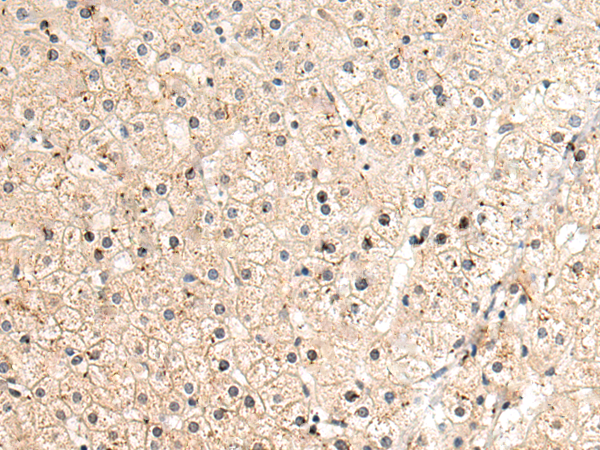


| WB | 咨询技术 | Human,Mouse,Rat |
| IF | 咨询技术 | Human,Mouse,Rat |
| IHC | 1/100-1/200 | Human,Mouse,Rat |
| ICC | 技术咨询 | Human,Mouse,Rat |
| FCM | 咨询技术 | Human,Mouse,Rat |
| Elisa | 1/5000-1/10000 | Human,Mouse,Rat |
| Aliases | LCB2; SPT2; HSN1C; LCB2A; NSAN1C; hLCB2a |
| WB Predicted band size | 63 kDa |
| Host/Isotype | Rabbit IgG |
| Antibody Type | Primary antibody |
| Storage | Store at 4°C short term. Aliquot and store at -20°C long term. Avoid freeze/thaw cycles. |
| Species Reactivity | Human, Mouse, Rat |
| Immunogen | Fusion protein of human SPTLC2 |
| Formulation | Purified antibody in PBS with 0.05% sodium azide and 50% glycerol. |
+ +
以下是3篇关于SPTLC2抗体的参考文献及其摘要概括:
---
1. **文献名称**:*Mutations in SPTLC2 promote de novo sphingolipid synthesis and drive hereditary sensory neuropathy*
**作者**:Goutman, S.A. et al.
**摘要**:该研究利用SPTLC2抗体检测患者成纤维细胞中丝氨酸棕榈酰转移酶复合体的表达变化,发现SPTLC2突变导致鞘脂合成异常,与遗传性感觉神经病变的发病机制相关。
---
2. **文献名称**:*Antibody-based inhibition of SPTLC2 activity reduces ceramide accumulation in diabetic cardiomyopathy*
**作者**:Li, X. et al.
**摘要**:通过SPTLC2特异性抗体抑制其酶活性,研究显示可减少糖尿病心肌病模型中的神经酰胺沉积,提示靶向SPTLC2可能成为代谢性疾病的治疗策略。
---
3. **文献名称**:*SPTLC2-mediated lipid metabolism is critical for tumor cell survival in hepatocellular carcinoma*
**作者**:Wang, Y. et al.
**摘要**:采用SPTLC2抗体进行免疫组化和Western blot分析,发现肝癌组织中SPTLC2高表达,且其介导的鞘脂代谢通路对肿瘤细胞存活至关重要。
---
如需更具体的文献年份或期刊信息,可进一步补充关键词筛选!
The SPTLC2 antibody is a research tool designed to detect serine palmitoyltransferase long-chain base subunit 2 (SPTLC2), a critical enzyme in sphingolipid biosynthesis. SPTLC2. along with SPTLC1 or SPTLC3. forms the heterodimeric serine palmitoyltransferase (SPT) complex, which catalyzes the first and rate-limiting step in sphingolipid production: the condensation of serine and palmitoyl-CoA to generate 3-ketodihydrosphingosine. Dysregulation of SPTLC2 is linked to metabolic disorders, neurodegenerative diseases, and hereditary sensory and autonomic neuropathy type 1 (HSAN1), often caused by mutations in the SPTLC1/SPTLC2 genes.
SPTLC2 antibodies are widely used in Western blotting, immunohistochemistry, and immunofluorescence to study protein expression, localization, and regulation in tissues or cell lines. These antibodies help elucidate sphingolipid metabolism’s role in cellular processes like apoptosis, membrane integrity, and signal transduction. Commercially available SPTLC2 antibodies are typically raised in rabbits or mice, targeting specific epitopes within the human SPTLC2 protein. Validation includes testing for specificity via knockout controls or siRNA-mediated knockdown. Researchers also employ these antibodies to explore therapeutic strategies targeting sphingolipid pathways in cancer, metabolic syndromes, and neurological disorders. Proper controls and standardized protocols are essential to ensure reproducibility, given the potential cross-reactivity with homologous subunits like SPTLC3.
×